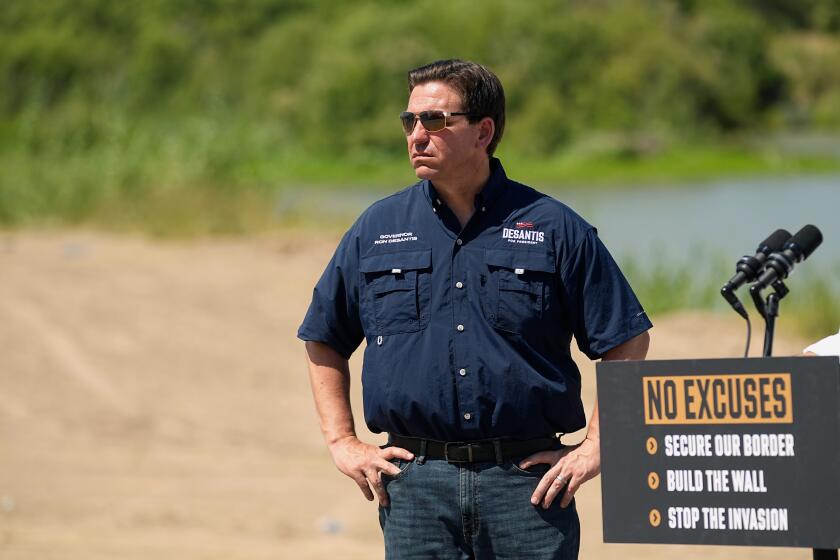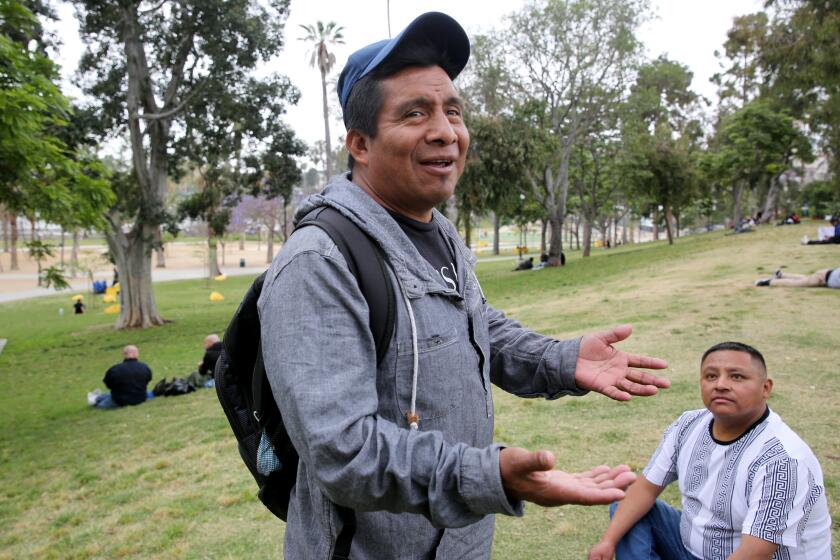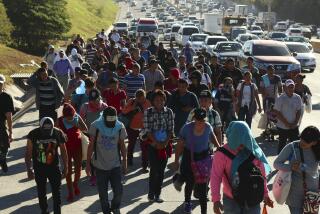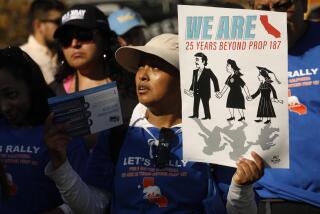Opinion: No, immigration and the border are not impossible problems
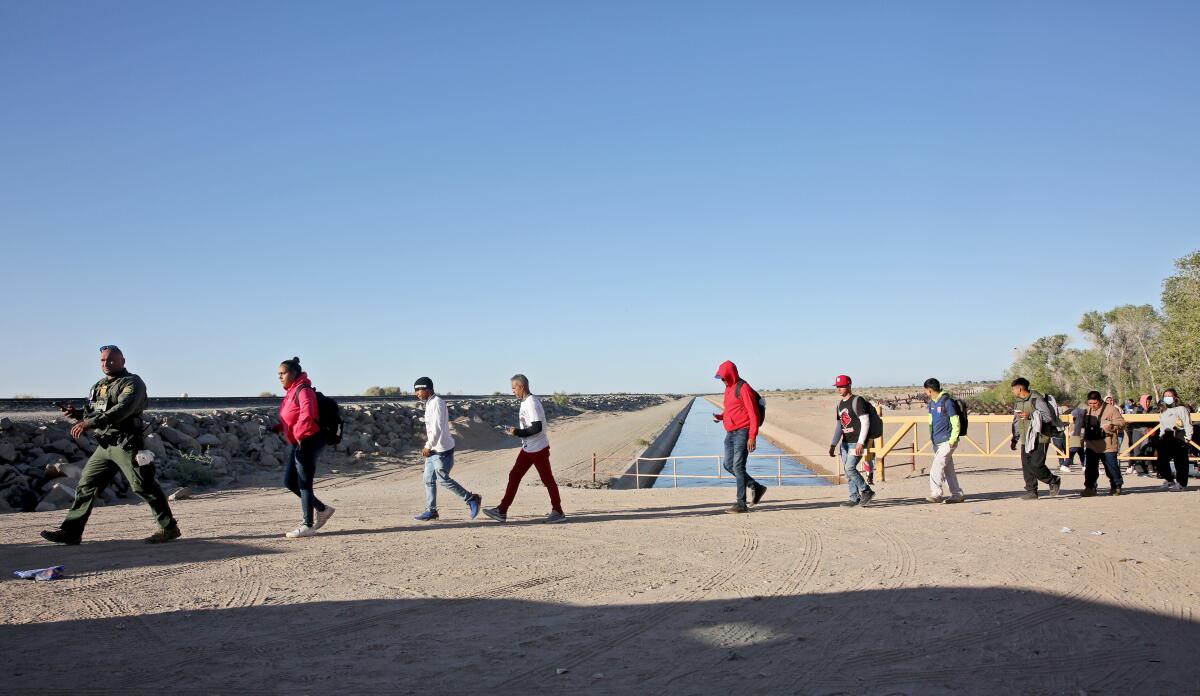
While the end of Title 42 did not lead to the border surges some anticipated, America still faces an immigration crisis, with a backlog of nearly 1.6 million asylum cases. Officials apprehended migrants crossing the border more than 5 million times from February 2021 to March this year, the highest number of arrests in decades.
Border stress and asylum backlogs are not new. Yet instead of learning from the policies of previous generations, politicians are pursuing gimmicks such as busing migrants to the home of Vice President Kamala Harris or pushing base-pleasing immigration bills that stand no chance of passing.
To form a functional legal immigration system, one place both parties may want to look is history.
No politician would suggest bombing U.S. corporations behind opioid-related deaths, but all top GOP presidential contenders endorse a counterterrorism operation against cartels in Mexico.
A major immigration spike in the U.S. came after the end of World War II as we confronted a labor shortage similar to todayâs. More than 1 million people were apprehended at the border in 1954. In response, immigration authorities increased and expedited legal pathways for migrants through a guest worker system known as the bracero program.
Under the program, immigration authorities interviewed migrants at the border and admitted them as guest workers. Rather than placing a hard numerical cap on migration, the program admitted people based on the needs of the U.S. economy, with California receiving the most workers among the 24 participating states.
Joseph Swing, the head of the Immigration and Naturalization Service at that time, said that âif there is any employer who cannot get legal labor all he has to do is let either the Department of Labor or Immigration know, and we will see that he gets it.â The program brought in more than 4 million braceros (so named for a Spanish term to describe laborers who work mostly with their arms). Border apprehensions fell by 96% from 1953 to 1959.
But by the end of 1964, after issues with its implementation, Congress let the bracero program expire. Some participating employers discriminated against and abused the workers. Though the program promised workers wage protections and basic housing, employers frequently paid late or not at all and provided only substandard housing.
The end of the bracero program largely signaled the collapse of a functioning immigration system. Border Patrol apprehensions increased once again from 35,000 to nearly 617,000 by 1974. We never replaced the program with a system to create feasible legal pathways for immigration that could begin to meet the needs of people arriving at the border, or the needs of our labor market. And ending the program did not improve wages for U.S.-born workers.
We did try other reforms. A bipartisan coalition pushed through the 1986 comprehensive immigration bill. Most critically, the act provided a path to legal residency and opportunities for nearly 3 million migrants who entered the country before 1982. But this one-off legislation did not fully tackle our demand for labor, and we hit another crisis by the 1990s. As is the case today, applying for asylum was the most accessible legal mechanism for migrants at the border to remain in the country. A surge of asylum cases overwhelmed the system, creating a huge backlog of cases.
A number of L.A. Latinos empathize with immigrants bused to California and other liberal cities from conservative states. âItâs a blessing,â one Angeleno said of the new arrivals.
To handle this, immigration authorities under the Clinton administration dramatically increased funding for immigration courts, doubling immigration judges and adding more asylum officers. The changes enabled the courts to meet a six-month deadline for asylum cases and allowed the system as a whole to separate work authorization from asylum applications. These factors decreased asylum cases from more than 147,000 in 1995 to 46,000 by 2003. This, in turn, decreased border crossings.
None of these past solutions was perfect. The bracero program remains controversial largely because of the work conditions it fostered. The 1986 immigration reform bill, while significant, was a one-time legalization that underestimated the labor and familial demands that continually draw migrants to cross our borders. The reforms in the 1990s were criticized for being too strict on some legitimate asylum seekers and leaning too much on deportation.
But some principles driving each approach still apply. Right now we have a system that ridiculously allows only 140,000 employment-based visas per year in a nation with millions of job openings.
We should look at our current temporary work visas â which are essentially smaller scale bracero programs â and stop using hard quotas, instead tying admissions to current economic conditions as we did before. We can also improve upon that approach with stronger protections for migrants by allowing them to change employers more easily and self-petition for permanent residency after several years of work. This would provide migrants with the kind of leverage with their employers that the original bracero participants never had.
As for our asylum system, we need to build back up the immigration courts to meet the current caseload while creating more legal pathways to work authorization beyond applying for asylum and waiting at least 150 days for a resolution (after which point you are allowed to apply for a work permit).
We could implement these changes with the same bipartisan approach that created the 1986 bill, but centered on providing recurring rather than one-time legal pathways for permanent residency.
The policy challenges of immigration wonât be solved overnight. But the past shows us that the system is not intractable.
Christopher M. Richardson is an immigration lawyer, former U.S. diplomat and executive at BDV Solutions, an immigration consulting company.
More to Read
A cure for the common opinion
Get thought-provoking perspectives with our weekly newsletter.
You may occasionally receive promotional content from the Los Angeles Times.
